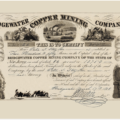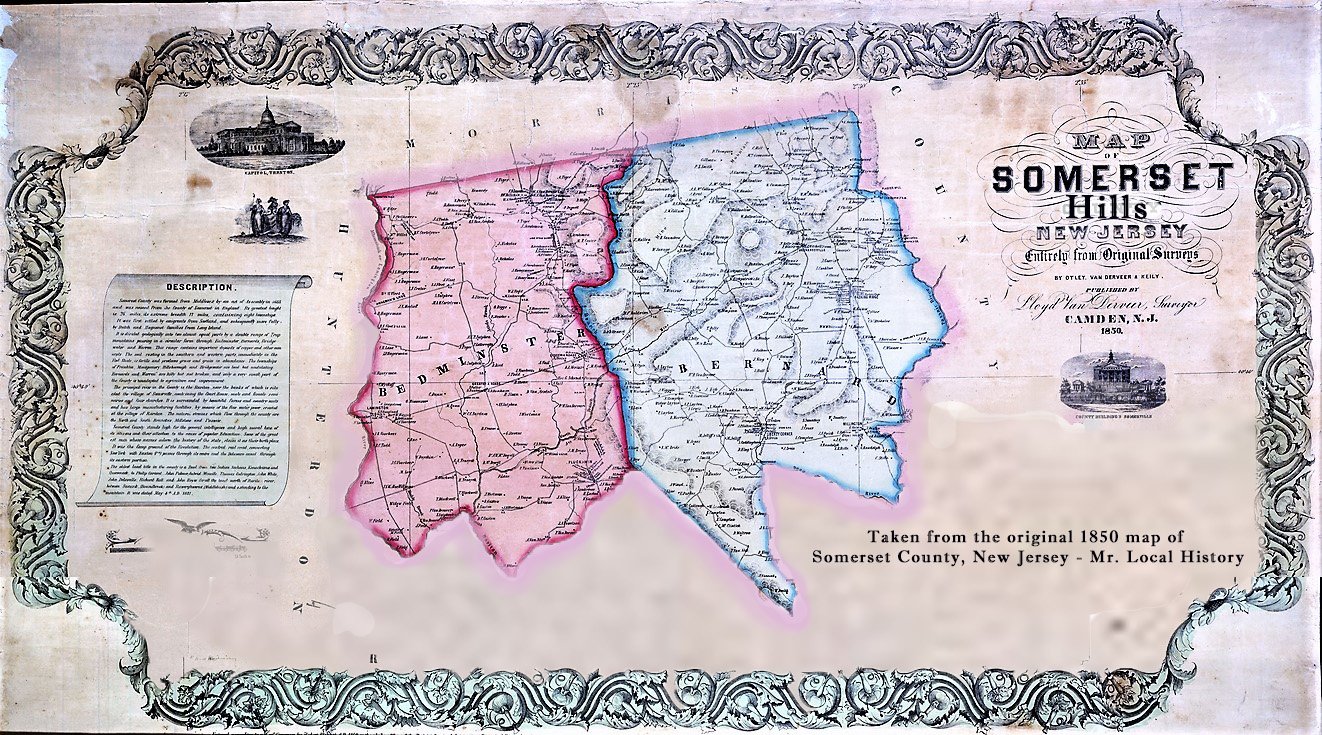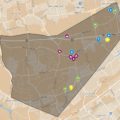Bridgewater is the second largest town by population in Somerset County, with 45,977 residents according the 2020 Census. Its population boomed in the 1970s-1990s, but has been an important part of the County and State since the Revolution. The township was incorporated by the New Jersey state legislature in 1798, thus being a part of New Jersey’s 104 original townships. Many of the great sites found in Bridgewater and its prominent community of Martinsville pertain to the American Revolution. There are several houses that have been preserved from Revolutionary and pre-Revolutionary times, that hold a plethora of history within their walls. Historical sites from the revolution also include entities that aren’t currently physically present, but can be easily reimagined within the landscape. There are also a few non-Revolutionary sites that will be found in this list that will have greater importance to the growth of the local community.
A final thought before we dive into this list that pertains to the definition of a historical site. Merriam Webster’s dictionary defines the word “historical” as, “of, relating to, or having the character of history.” It defines “site” as, “the place, scene, or point of an occurrence or event.” Thus, a historical site could be, a place or event relating to history. The question arises of what constitutes history, specifically how far back? We may not view places that are still in their prime or built in recent times as historical. However, we should appreciate the potential historical value these places may have in the coming decades.
Basic Parameters
The main list is based on the site’s historical relevancy to the narrative of the town, the greater area, the state, and/or the country. The more impactful the site is to the general historical narrative, the higher it is on the list. Sites in Martinsville are included as it is an unincorporated community, under the jurisdiction of the Bridgewater Township local government. Historical sites in Raritan are not included on this list. While Raritan shares a public school district with Bridgewater, Raritan is a separate borough of the county, with its own separate local government.
Don’t forget to post a comment and share your thoughts. If you think there is a historical site that was not included and should’ve been, comment the location and some of the history behind the site.
5: Bridgewater/American/Washington/Alpha Copper Mining Site
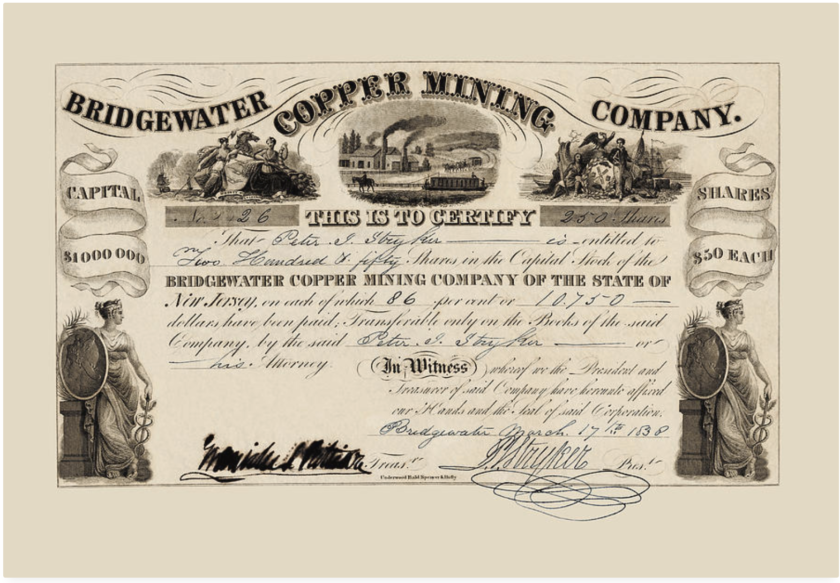
In the mid 1700’s on modern day Stella Dr., copper mining became active. The first organized mining operation on that site was an effort to provide copper for brass artillery during the American Revolution. Copper from this mine directly led to the construction of a cannon used during the Siege of Yorktown in 1781. Shortly after the Revolution, all mining operations in this site ceased for over forty years.
Mining on this site was reinvigorated with the founding of the Bridgewater Mining Company in 1824 by German immigrant Augustus Camman. Camman partnered with successful businessman Goold Hoyt, creating an extremely well-organized business with large investments. The Bridgewater Mining Company closed in 1830, but Augustus’ son Albert organized a new mine on the site in 1835, calling it the Washington Copper Company. It was more successful than its predecessor, but closed in 1844 due to constant flooding.
Again for nearly forty years the mining site was closed and abandoned. However, in 1880 the mines were opened again, this time named the American Copper Company. Under this company, the mines were dug out almost a thousand feet farther and saw its fair share of successes. Copper specimens from this iteration of the mines were on display at the 1901 World’s Fair in Buffalo. In a few years, the American Copper Company also met its demise, as ore deposits had been depleted.
Finally, in 1908 the Alpha Copper Company began operations on the site. The ACC utilized the latest innovations in electric machinery, digging an additional 1,000 feet. In an all-too-familiar theme, the ACC closed within a couple years and mining was never active on this site again. While it sits hidden in the backyards and woods of quiet neighborhoods, this mining site just off of Foothill Road is a vital part of the history of Bridgewater and the state as a whole. It played a large role in building artillery for the Siege of Yorktown and by its end, it was the second largest copper mine in New Jersey.
4. Jacob Vosseller House/Castner’s Tavern/Allen’s Tavern
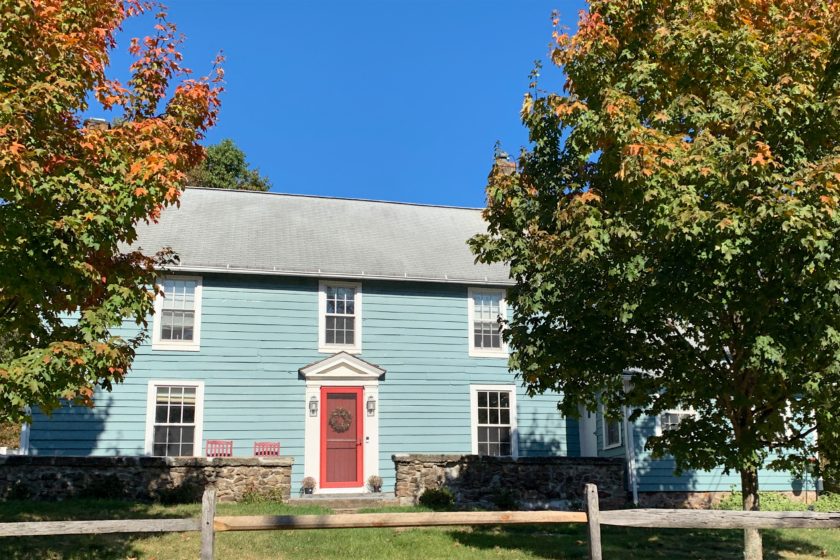
Jacob Vosseller, a German immigrant, bought property and built a house on modern Foothill Rd in 1754. Vosseller’s family home was an important location during the Revolution. Robert Erskine, a master engineer who was the surveyor general of the Continental Army, listed the Vossler house as a landmark on maps showing the Somerset County area. It was also noted that Washington and his troops at least passed the house directly on his route to Morristown. After the Revolution, Vosseller operated a general store out of the house until he left the state in 1798. Jacob had a son, also named Jacob (1758-1840) who married Sally Castner. Sally Castner’s family bought the house from the Vossellers with the intent of turning it into a tavern. This new tavern’s location was also important, as in the application for a tavern license it was mentioned,”there is at present no tavern on the road from Middlebrook to Pluckemin, a distance of 10 miles.” The tavern was sold a few times between 1811-1836, before being bought by William L. Allen of Bedminster. The newly dubbed Allen’s tavern prospered, with Allen adding a blacksmith shop and a barn to the property. Upon his death in 1863, William L Allen left the property to his son, John K. Allen. However, John had no interest in operating a tavern, but remained on the property as a farmer. After John’s death in 1904, the property was still an operating farm. The property was owned by the prominent Bridgewater-based Kopf family, as a dairy farm from 1904 until 1946. After the Kopf family sold the property, it became a private residence. In January 1986, the Jacob Vosseller House (as it is currently known) was added to the National Register of Historic Places. The United States Department of the Interior’s official form regarding the house states that the Jacob Vosseller House is, “one of the best preserved pre-Revolutionary commercial buildings in the Somerville area.”
3. Van Veghten House
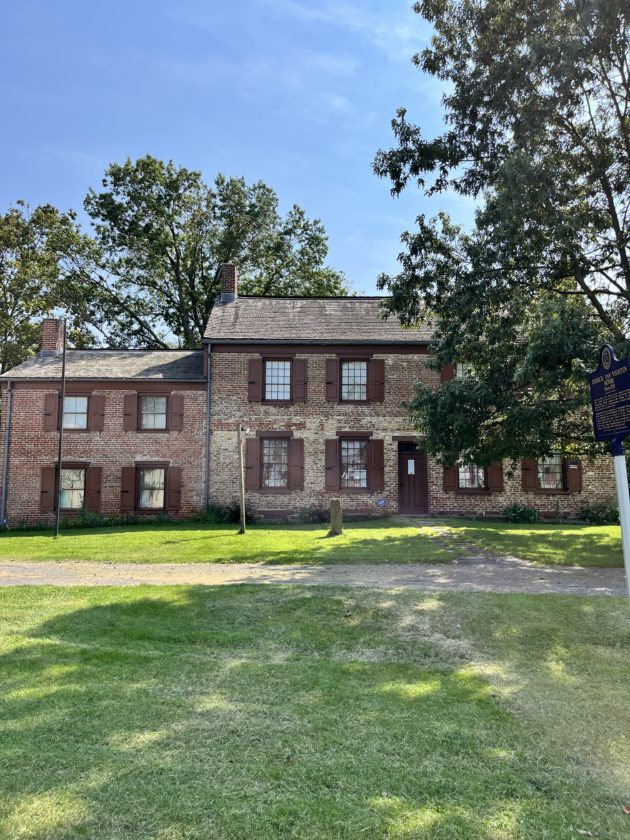
The Van Veghten House is the first property on this list to have direct significance to a major figure in the Revolution. The property was first acquired by second generation Dutch farmer, Michael Van Veghten, on the modern day eponymous Van Veghten Drive. The property is situated on the current border of Bridgewater and Manville. The original house was considered that of a “lowlander farmer’s” and in his will Michael described himself as a “yeoman.” Upon Michael’s death in 1737 however, his son Derrick inherited the property and made vast improvements. He expanded the farmhouse adding a second story, building one of the few brick houses in Somerset County at that time. Derrick himself was an upstanding citizen, serving in mid 18th century Somerset County assemblies and eventually becoming a staunch patriot during the Revolution. Derrick himself was captured by the British and held hostage for several days in 1777. It might have been this event that spurred his efforts to become more directly involved in the Revolution. In late 1778 during the Second Middlebrook Encampment, General Nathanael Greene, his family, and his soldiers were housed by Van Veghten. Nathanael Greene and his wife Catherine “Kitty” Littlefield Greene stayed in the house. Pennsylvania Continental Troops under Greene’s command, camped on the grounds of Van Veghten’s property. The Van Veghten house provides a couple of interesting stories pertaining to Greene and the Revolution. George Washington was a repeat guest at the house and one letter by General Greene describes a night where, “…General Washington danced with Mrs. Greene upwards of three hours without seting [sic] down.”
The house was also the backdrop during John Simcoe’s infamous second raid, where one of the buildings burned was the Dutch Reformed Church that Derrick’s father had built. In 1781, General Rochambeau’s troops marched along the property, while at least General Greene’s wife Kitty was still staying in the house. Shortly after Yorktown and the departure of General Greene from the house, Derrick passed away. The house was kept in his family for only one more generation, before being sold to numerous owners throughout the 19th and 20th centuries. The Van Veghten House has been the home of the Somerset County Historical Society since 1971. It was also placed on the National Historic Register in 1979.
2. Van Horne House
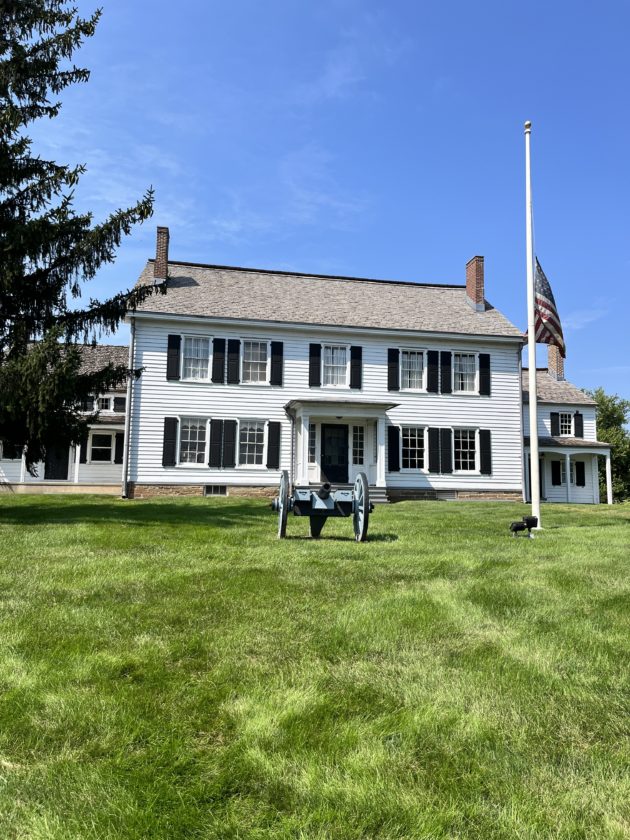
The top historical private owned property on this list, the Van Horne House, may have been something of a resort for the standards of the Revolution. The house and 84-acre property was purchased by Philip Van Horne from his Uncle Jacob Janeway in 1750. Van Horne colloquially named the house “Phil’s Hill.” Van Horne was a well-to-do citizen in Pre-Revolutionary New Jersey. During the French and Indian War, he was a Colonel in the Somerset County Militia. In 1760 before that war’s end, he was appointed a Somerset County court judge. Van Horne was also known for his hospitality, something well documented during the Revolution. General Benjamin Lincoln made the Van Horne House his headquarters during the Spring of 1777. The house was dubbed “Convival Hall,” because of his accommodation of Revolutionary and British soldiers alike. It was reported that before the Battle of Bound Brook, Van Horne hosted British General Charles Cornwallis for breakfast. After the defeat of the Revolutionaries in the battle, American General Benjamin Lincoln narrowly avoiding capture, escaped to his headquarters at the Van Horne House that same evening. Van Horne’s penchant for accommodating both sides was not received well by Washington (who probably visited the house himself). He had Van Horne arrested and placed on parole, questioning his allegiance. He was quoted in a letter saying that Van Horne could not be trusted to uphold his parole, saying “from his noted character there is no dependence to be placed on his parole.” After their victory at Bound Brook, the British briefly used the Van Horne House as an outpost.
In 1778, the Van Horne House served as the headquarters for Revolutionary General William Alexander Lord Stirling, second in command to George Washington. The house served as his headquarters for the entirety of the Second Middlebrook Encampment period (1778-1779) and continued to be a hotbed of hospitality. American Captain Alexander Graydon in his memoirs wrote, “…his hospitality ought certainly to have been recompensed, by an unlimited credit on the public stores. His house, used as a hotel, seemed constantly full.” Later, Graydon mentioned that American General Henry Lee stayed at the house for a time. One of Van Horne’s final guests included the French Major General Marquis de Chastellux in 1780. During the Revolutionary War, Philip Van Horne arguably provided the best hospitality for officers in the state. He died in 1794 and the house was subsequently sold to several private landowners. The house unfortunately fell into disarray in the late 19th century as corporate ownership took over. However, in 1934 Calico Chemical Company purchased the property and fully restored the house with its original colonial style. Calico left the property in the 1980’s due to environmental concerns. This departure paved the way for the Van Horne House to earn its recognition. In 2002, the Van Horne House was added to the US National Register of Historic Places. Today it serves as the headquarters and exhibition space for the Heritage Trail Association.
1. Middlebrook Encampments
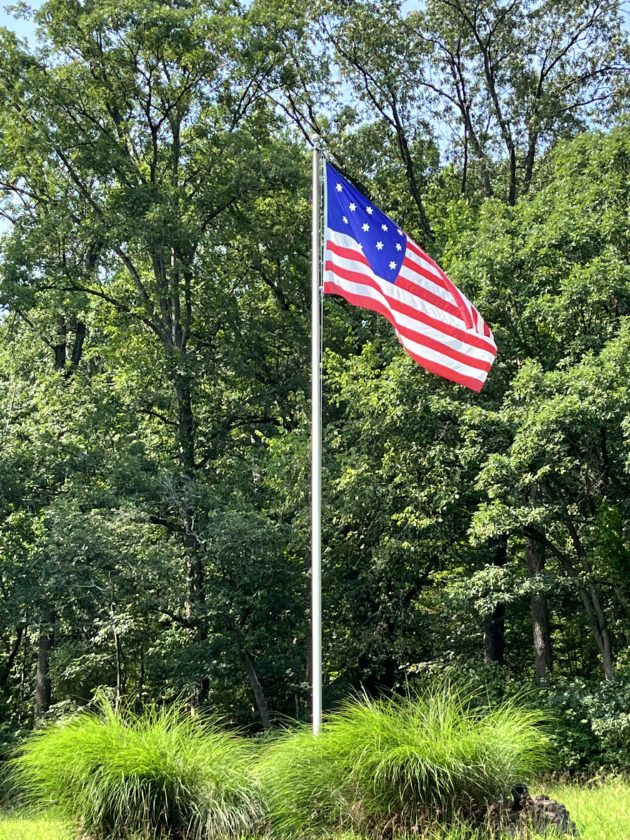
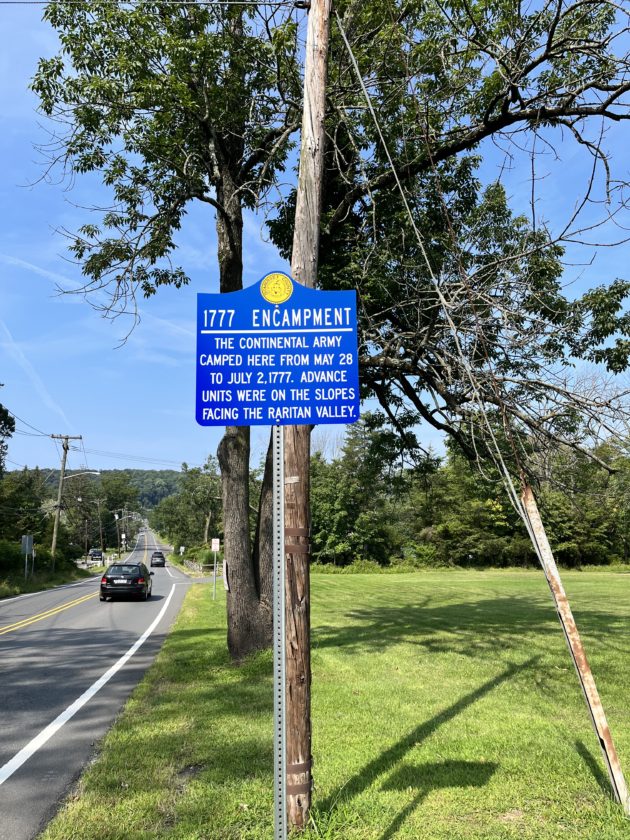
The number one spot on this list–like the number five spot–, wouldn’t be known if it weren’t for the preservation of the story behind its importance. Two sites mark the Middlebrook Encampments. One is a field at in the woods of Middlebrook Road on the Bridgewater/Bound Brook border. The other is a field adjacent to homes and Chimney Rock Road in Martinsville. George Washington and his troops camped in between and all around both those spots. The first encampment was setup by Washington and his troops after victories at Trenton and Princeton in May, 1777. This area was very centrally located between New York and Philadelphia, but also New Brunswick. The Watchung Mountains were a good lookout spot into New Brunswick (held by the British at that time). Washington and 8,000 continental troops encamped in this location from May 28 to July 2, 1777. It was during this time that one of the most important events in our nation’s early history happened on the encampment: on June 14, 1777, the Second Continental Congress passed the Flag Resolution, adopting the first official flag of the United States. While this is still up for debate among some scholars due to there being no definitive evidence, it has been deduced that the first official American flag was hoisted at the First Middlebrook Encampment that very same month. To this day, a thirteen-star American flag flies at the Middlebrook Encampment site. For more about the first American flag and its unfurling click the link here.
Washington and the Continental Army moved with the changes of the war after July 2, 1777. They would however return to Middlebrook for the second time in November 1778, essentially setting up command headquarters in the greater Somerset County area. During this Second Encampment period, several prominent generals set up their residencies in homes throughout the county. The Bridgewater/Martinsville Encampment site from 1777 was still utilized, but properties and land around a large portion of the county were also used. A larger amount of land was needed was needed because 10,000 troops were stationed in this theater of the war, equal to the population of Somerset County itself at that time. To minimize impact on residents, different parts of the army were spread out. The amount of troops and important generals stationed around the Second Middlebrook Encampment, reinforces the strategic importance of the area. Perhaps more important, is the lasting historical impact of the overall Middlebrook Encampment. Two other entries on this list were made possible because of the Second Middlebrook Encampment, housing generals and their troops. Other historical landmarks outside of Bridgewater, such as Washington’s residence at the Wallace House in Somerville, have importance because this site was chosen as an encampment. Washington and the Continental army stayed at Middlebrook for the second time until June 3, 1779, when they moved to Morristown and New York State.
The Middlebrook Encampment Site was commemorated much earlier than other sites on this list. It was deemed historically significant locally since 1889 and was added to the National Register of Historic Places in 1975. The site is owned and preserved by the Washington Camp Ground Association which also organizes annual July 4th and February 22nd (Washington’s birthday) programs on the site, both of which are open to the public. The program on July 4th includes a public reading of the complete Declaration of Independence and the program on February 22nd includes a dinner. The Middlebrook Encampment Site is considered by this list to be most important not only because of to its importance as a physical piece of land, but because of its importance towards the overall history and other historical sites of Somerset County, New Jersey, and the early United States.
Honorable Mentions
Raritan Valley Country Club (1911)
The country club was founded in 1911 by Senator Joseph S. Frelinghuysen and five other prominent citizens of the area. Land adjacent to Frelinghysen’s was repurposed and the country club was fully operational by 1912. President Warren G. Harding, a friend of Frelinghuysen, was a frequent guest of the country club. The country club did well in its first decades, but encountered hardships from the great depression, a caddy strike, and frequent emergency plane landings in the 1930s-1940s. After World War II, the country club saw a resurgence of members and the club facilities steadily improved with new add-ons (swimming pool, tennis courts, gazebo..etc). The club survived another series of hardships because of the lack of new members in the 1960s-1970s. However, this was remedied by a large population influx into Bridgewater and by the 1980s, the club regained prominence. Today the Raritan Valley Country Club located along Route 28, is a successful private country club that hosts golf, tennis, and other recreational facilities.
Bolmer Farmhouse (1754)
The 1754 Farm House, was the last of homes built by the notable Bolmer family. The Bolmers were one of the first Dutch settlers in what is today Bridgewater. Not too much is known about the specifics of the early Bolmer settlers in the 17th century. The earliest surviving public record of the family is a stone on the family’s burial ground described as “F.B”dated at 1742. The Bolmers were characterized as “staunch patriots and all the menfolk served their country in time of war and peace.” Today, the site and the marker are on the property of a remodeled farm house on West Circle Drive in Martinsville.
Bridgewater Commons Mall (1988)
Perhaps this honorable mention, might find its way on a top list in a hundred years. The Bridgewater Commons Mall, has played a major role in Bridgewater’s economic and second population booms in the 1990’s. The Bridgewater Mall as it is colloquially known, was opened in 1988 with three main department stores. It also hosted the first official Disney Store outside of California. The Bridgewater mall was also one of the first malls to ban smoking, doing so in 1993. In the 1990s and early 2000s the Bridgewater Mall expanded to add more department stores, adjacent office buildings, hotels, and an outdoor shopping area known as the The Village at Bridgewater Commons. The Bridgewater Mall is the only large shopping mall in the county. Today, the Bridgewater Commons Mall remains prosperous, with dozens of stores, several restaurants, and a movie theater. Its impact on the local economy makes it arguably the most important property in modern Bridgewater. Its founding less than forty years ago combined with its continual renovation, puts the Bridgewater Commons Mall on the honorable mention list, for now.

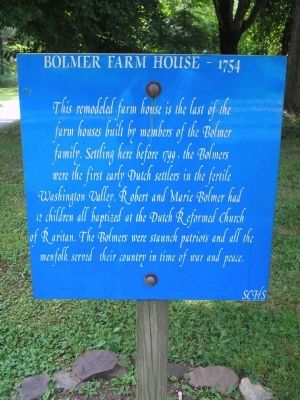
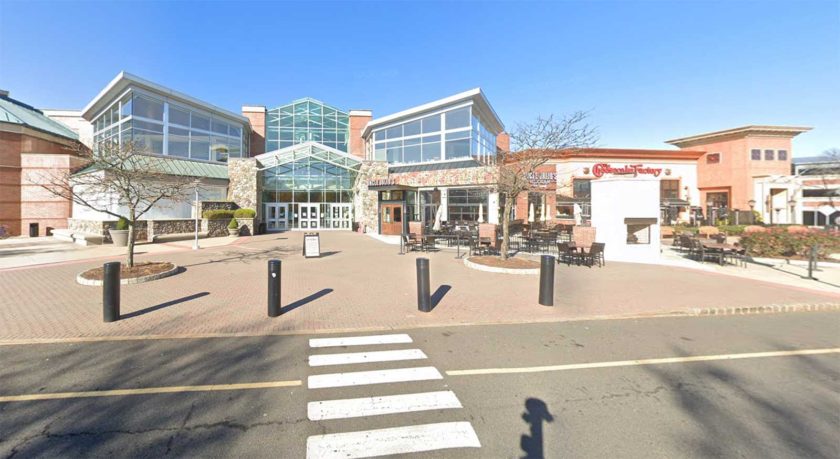
Other Sites That Might be Considered “Historical” in the Years to Come
TD Bank Ballpark
Opened in 1999, the ballpark is home of the Somerset Patriots, currently a AA affiliate of the New York Yankees. The Patriots were previously a very successful independent league team. They are the only professional sports organization completely based in Somerset County. The Ballpark is located on Main Street adjacent to the Bridgewater station of the Raritan Valley line for NJ Transit.
Somerset County 4H Fair
The location for Somerset County’s 4H Fair has always been located at North Branch Park in Bridgewater. First operating in 1947, the fair annually hosts many exhibits and vendors in tents every August suitable for all ages. Founded by Rutgers University’s NJ Agricultural Experiment Station, the 4H Club is an informal educational program for youth, focusing on agriculture, environmental science, and other practical areas. Besides nature and farming based tents, the Somerset County 4H fair hosts tents that include crafts, presentations of different cultures, and technology among many others.

